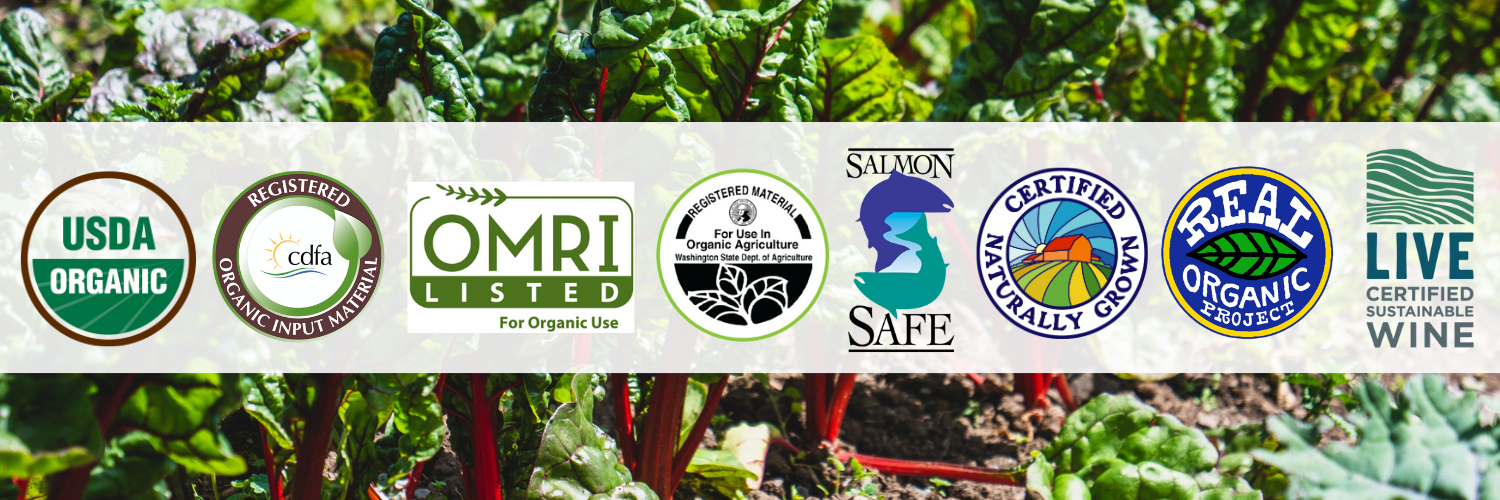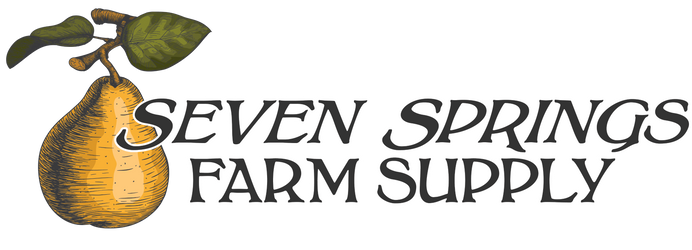
Certifications 101
Are you considering organic certification? Are you already certified, or do you want to grow “organically” but have questions about what that entails? The goal of this article is to help you, the farmer, navigate the organizations, standards and pile of acronyms involved in certification.

What does USDA Organic or "Certified Organic" mean? And, what is the National Organic Program?
The familiar USDA Organic logo is the seal, or guarantee, that goes on “USDA Certified Organic” agricultural products such as produce, packaged foods, seed and feed. This seal assures buyers that an agricultural product was produced using methods and materials approved for organic production.
Who approves a method or material for Certified Organic production? And who issues the USDA Organic seal?
The National Organic Program, or NOP, is the federal program that outlines the development of the national organic standards for agricultural products, and accredits USDA Organic certifiers. You can think of the NOP as the creator and keeper of the USDA Organic seal.
The National Organic Standards Board, or NOSB, is a group of 15 federally appointed volunteers - including farmers, producers, consumer advocates and scientists - who meet twice a year to review, write and revise the official USDA Organic standards. This includes the National List of Allowed and Prohibited Substances. You can think of the NOSB as the curators of the standards behind the USDA Organic seal.
The National List of Allowed and Prohibited Substances is exactly what it sounds like. This list, curated by the NOSB, outlines which generic inputs can or cannot be used in USDA Certified Organic production, and how some of those inputs can or cannot be produced. The focus of this list are the materials origin and production practices used to produce any given input. Several material certifiers exist to inspect and guarantee that an input meets the National List requirements, we'll cover them shortly.
Who certifies that a product is approved for Organic Production?
All products that meet the National List requirements may be used in Certified Organic production as long as a farm certifier has reviewed and given their approval prior to use. Many fertilizers or other inputs meet the requirements outlined in the National List but are not reviewed or certified by a material certifier. You may see some of these materials referred to as “NOP Compliant”. Farm certifiers keep lists of these materials, and may review new materials for National List or NOP Compliance at the request of a farm or producer/handler.

There are also several materials certifiers that specialize in reviewing agricultural inputs for NOP compliance.
The Organic Materials Review Institute, Washington State Department of Agriculture and California Department of Food and Agriculture review agricultural inputs, including fertilizers, pest and disease management products and potting mixes, at the request and expense of input manufacturers. These organizations certify that all ingredients and production methods for a given input or product meet the requirements outlined in the National List. Think of the seals of these organizations as short-cuts to knowing whether an input is NOP compliant.
Who certifies that an agricultural producer is compliant with the NOP standards?
Farm or product certifiers are accredited by the NOP and conduct site and records inspections of farms, handling facilities, and agricultural producers to ensure that USDA Certified Organic standards have been followed. These organizations issue certificates and approve the use of the USDA Certified Organic seal/logo on products. Many of these certifiers are regional, some are non-profits, some are hosted by land-grant universities or state agencies, and some are quite large. A farmer or producer pays one of these organizations to certify their operation or product as “USDA Certified Organic” and approve the use of that label or logo.

Are there alternatives to USDA Organic certification?
Yes, there are a number of alternatives to “traditional” certifiers or USDA Organic certification. Certified Naturally Grown (CNG) certifies to the USDA’s NOP/NOSB standards using peer/farmer inspectors, and issues their own seal rather than the USDA Certified Organic seal. The Real Organic Project is a no cost add-on for USDA Certified Organic operations that follow additional standards. There are also regional certifiers like Salmon Safe or LIVE that maintain and certify to their own set of standards written with specific ecosystems, species or industries in mind.
While much of this can seem dense or complicated, it's important to remember that these certifiers exist to serve farmers and the general public. If you're new to certification and need help with it, you should be able call any of these service providers and they should be able to help you navigate the process and their role in it.

Leave a comment